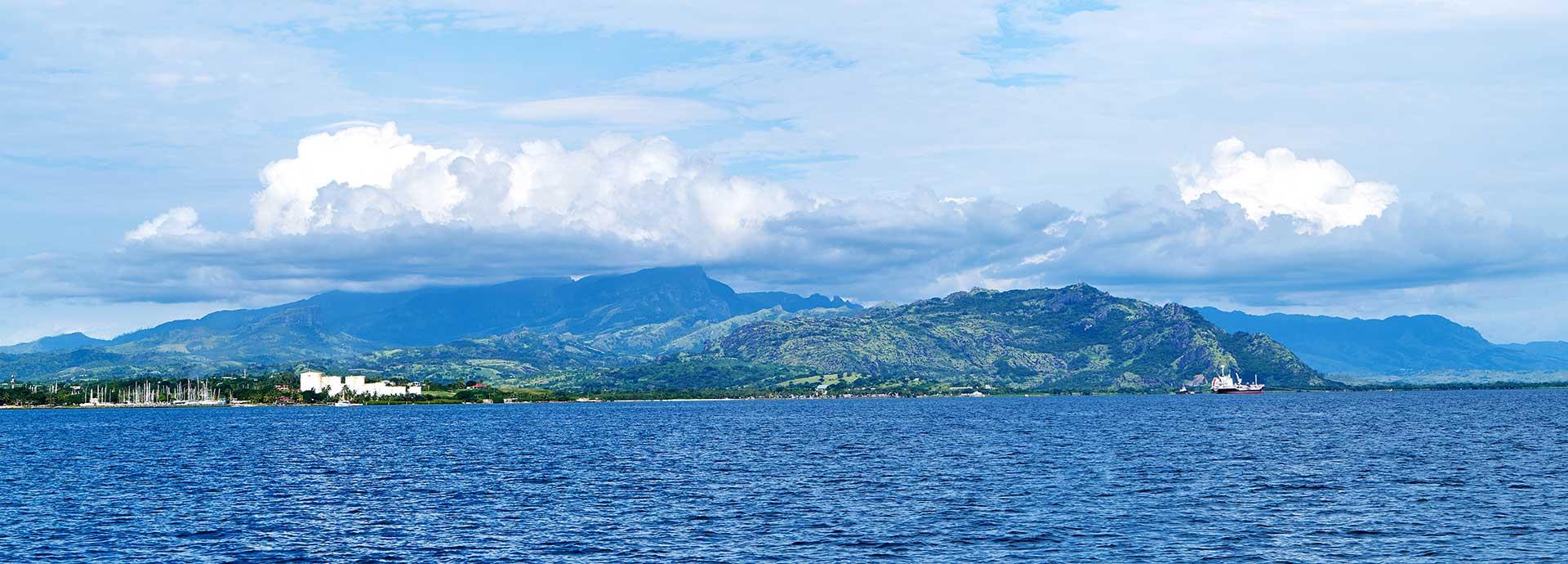

Organisations and nations around the world are looking for new ways to lessen their environmental impacts. Recently some island nations have adapted “blue bonds” as a way to reduce GHG emissions in the maritime industry. Read on to learn more.
The Pacific Blue Shipping Partnership, an agreement between the island nations of Fiji, the Marshall Islands, Samoa, the Solomon Islands, Tuvalu, and Vanuatu aims to reduce carbon emissions by 40% in 2030 and achieve full decarbonisation by 2050. As part of the agreement, the nations have committed to retrofitting existing vessels with low-carbon producing technology, and going forward, purchasing vessels equipped with zero-emissions technology.
Countries in the Pacific are estimated to contribute only 0.03% to global carbon emissions, but island nations are often the first to feel the effects of climate change. Sea levels have risen nearly four times the global average in some parts of the Pacific, while natural disasters such as typhoons are more frequently ravaging the island nations.
Funding sustainability
The increased prevalence and strength of storms and natural disasters has created economic and structural issues for many island nations as well as high debt loads. These problems can make it difficult for these countries to dedicate financial resources to lessening the impacts of climate change on their natural environments.
“These governments realise [the importance of marine protection], but they have small economies and high debt loads, often from having to borrow for recovery from a hurricane and the massive damage that happens. It’s a nasty cycle that they can get into,” says Rob Weary, Deputy Managing Director of Blue Bonds at The Nature Conservancy. “Most [nations] have the right intention of wanting to better manage these resources, but they have health care, education, infrastructure needs, and everything else. The environment ends up being at the bottom of the totem pole in terms of priorities for investment in these countries.”
Like “green bonds,” “blue bonds” are a financial instrument that helps fund environmental projects. Blue bonds are a system of debt buy-backs and governmental debt restructuring, in which a pool of funds is set aside specifically dedicated to environmental restoration, according to Weary.
“Blue is for the ocean,” Weary says. “We’re focusing these [bonds] on marine conservation, improving fisheries management, improving coral reef management, and adapting to climate change via ecosystem-based adaptation.”
Weary has spent more than 20 years working in what he calls “conservation finance.” Recently, he’s been working with island and coastal nations to develop sustainable finance mechanisms to support marine ecosystems. His goal is to make environmental protection pay off and create funding streams through debt conversion and restructuring.
Preserving valuable resources
Preserving the environment and minimising the impacts of climate change are vital to the existence of island nations, many of which are highly dependent on natural resources through tourism or the fishing industry. Beyond the shipping industry, there are many ways blue bonds could be used to promote sustainable marine conservation.
“With a lot of these countries, 50%-60% of gross domestic product (GDP) comes from tourism, and upwards of 30% can come from fisheries,” Weary says. “We’ve done plenty of surveys of tourists, and the reason they come is clearly about the environment. They come to hang out on the beach, to snorkel, to dive, to sail, to hike in the forests.”
Beyond tourism, there are structural and financial reasons to protect marine ecosystems around islands. For example, healthy coral reefs and mangroves provide natural infrastructure to protect the shoreline from 97% of wave energy, according to Weary.
If island nations use blue bonds to establish “no-take” areas and protect nurseries and key habitats, then within two or three years the local biodiversity and biomass can double or triple. Dedicated fishing zones can also be established next to thriving protected areas to allow for spill over of fish populations, which in turn helps fishermen catch more and bigger fish.
A growing initiative
Unlike green bonds, which have been around for years, blue bonds are relatively new to the field of conservation finance. The first blue bond was issued last year to the Republic of Seychelles. The USD 15 million issuance was granted in an effort to improve fishing practices, managing marine protected areas, and create a fishing management plan.
In an effort to define the sustainable finance principals of blue bonds for future use, the European Commission, the World Wildlife Fund, the International Sustainability Unit, and the European Investment Bank have worked to identify 14 traits of the “blue economy” – including diversification of investments and building partnerships with both public, private, and non-governmental organisations, along with highlighting the importance of the ocean as a global mechanism for the 90% of all goods and products shipped around the world.

